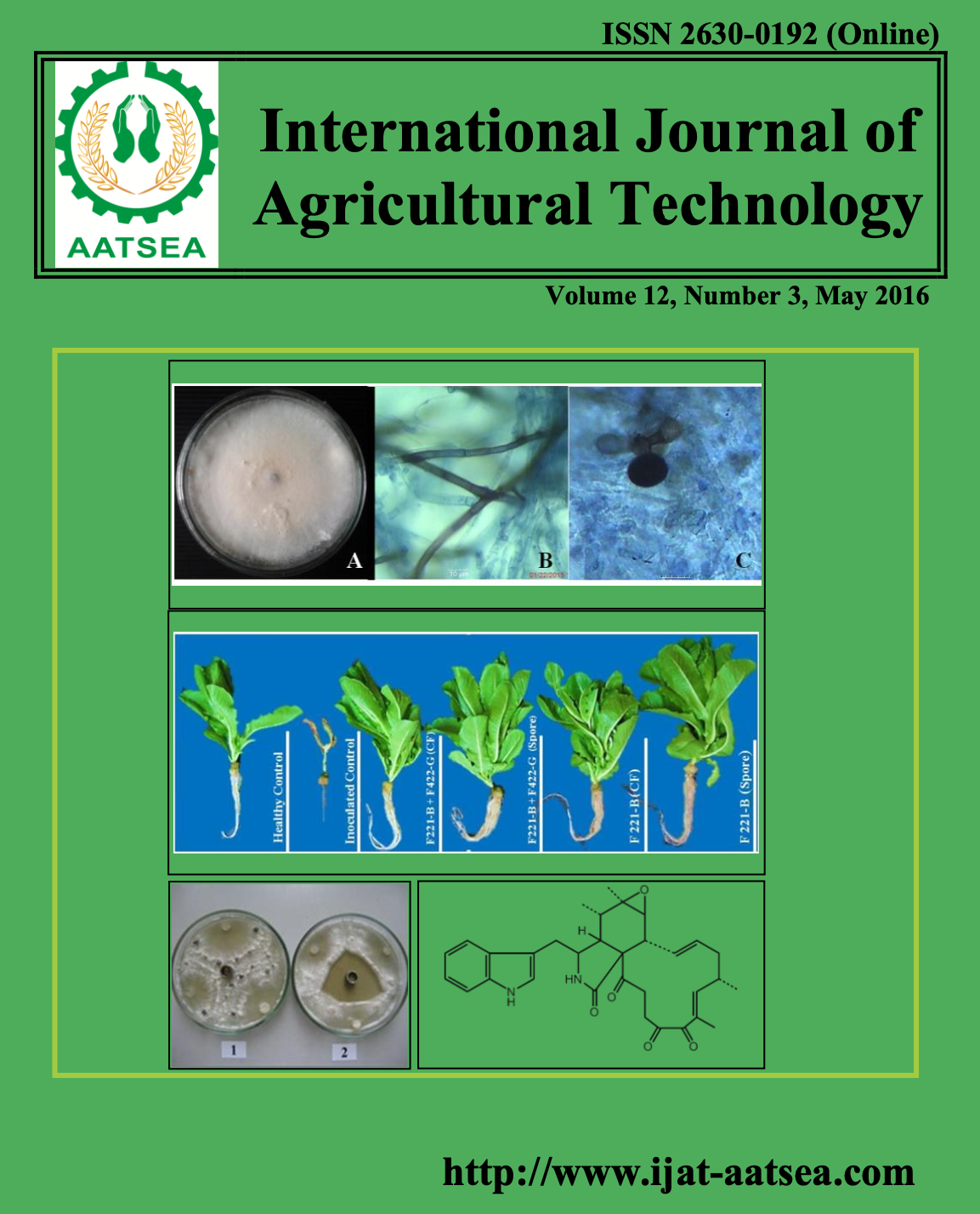Microbial contamination of some cosmetic preparations in Egypt
Main Article Content
Abstract
The present study aims to verify, elucidate and screen microbial contamination in different cosmetic samples. The samples were collected from various cosmetic brands commonly brought to the laboratory of microbiology, the National Organization for Drugs Control and Research (NODCAR) for quality assessment. Bacterial and fungal-microbial contamination was found in 32 samples (22.68%) out of 140. The maximum bacterial counts were found in shampoo samples compared to other tested cosmetic samples, followed by gel, solution, cream and oil samples. The microbial counts varied regarding cosmetic type, liquid, solid, or powder. The shampoo-9, shampoo-131, and cos-gel-68 were found to be contaminated with Escherichia coli, whereas the shampoo-3, shampoo-13, shampoo-129 and cos-sol-28 samples were contaminated with Staphylococcus aureus. However, Pseudomonas aeruginosa was detected in the samples of shampo-130 and 134. From health point of view the cosmetic products have to be free from any pathogenic microorganisms.
Article Details

This work is licensed under a Creative Commons Attribution-NonCommercial-NoDerivatives 4.0 International License.
References
Abdelaziz, A. A., Ashour, M. S. E., Hefni, H. and El-Tayeb, O. (1989). Microbial contamination of cosmetics and personal care items in Egypt, Eye shadows, mascaras and face creams. Journal of Clinical Pharmacy and Therapeutics 14:21.
Anelich, L. E. and Korsten, L. (1996). Survey of micro-organisms associated with spoilage of cosmetic creams manufactured in Sout Africa. International Journal of Cosmetic Science 18:25-40.
Ashour, M. S., Abdelazia, A. A., Hefai, H. and El-Tayeb, O. M. (1989). Microbial contamination of cosmetics and personal care items in Egypt – body lotions and talcum powders. Journal of Clinical Pharmacy and Therapeutics 14:207-212.
Baird, R. M. (1984). Bacteriological contamination of products used for the skin care in babies. International Journal of Cosmetic Science 6:85-90.
Behravan, J., Bazzaz, B. S. F. and Makaekeh, P. (2005). Survey of bacteriological contamination of cosmetic creams in Iran. International Journal of Dermatology 44:482-485.
Berejka, A. J. (2004). Emerging applications of radiation processing. Proceedings of a technical meeting held, Vienna, 28–30 April 2003.
Campana, R., Scesa, C., Patrone, V., Vittoria, E. and Baffone, W. (2006). Microbiological study of cosmetic products during their use by consumers: Health risk and efficacy of preservative systems. Letters in Applied Microbiology 43:301-306.
European Communities (1979). Council Directive on the approximation of the laws of the member states relating to cosmetic products, as amended.
Ferrarese, L., Paglia, R. and Ghirardini, A. (2003). Bacterial resistance in cosmetics industrial plant: connected problems and their solution. Annals of Microbiology 53:477-490.
Flores, M., Morillo, M. and Crespo, M. L. (1997). Deterioration of raw materials and cosmetic products by preservative resistant microorganisms. International Biodeterioration and Biodegradation 40:157-160.
Gamal, M. A. B, Abo Azza, M. M., Al Gayeed, A. O. A and Sawan, M. S. (2015). Microbiological quality assessment of some brands of cosmetic creams sold within Alkhoms City, Libya. IOSR Journal of Dental and Medical Sciences (IOSR -JDMS) 14:60-65.
Blanchin, A., Chareyron, C. and Levert, Q. (2014). The customer behavior in the men's cosmetics market. University of Halmstad. Högskolan Halmstad.
Hugbo, P. G., Onyekweli, A. O. and IjomaIgwe, F. (2003). Microbial contamination and preservative capacity of some brands of cosmetic creams. Tropical Journal of Pharmaceutical Research 2:229-234.
Houlton, S. (1998). Cosmetics and toiletries. Chemistry in Britain 34:33-36.
Katusin-Razem, B., Mihaljevic, B. and Razem, D. (2003). Microbial decontamination of cosmetic raw materials and personal care products by irradiation. Radiation Physics and Chemistry 66:309-316.
Lundov, M. D., Moesby, L., Zachariae, C. and Johansen, J. D. (2009). Contamination versus preservation of cosmetics: a review on legislation, usage, infections and contact allergy. Contact Dermatitis 60:70-78.
Nasser, L. A. (2008). Fungal profiles isolated from open and used cosmetic products collected from different localities in Saudi Arabia. Saudi Journal of Biological Sciences 15:121-128.
NakiSiviri, N., Ozar, A.Y., Ozalp, M., Atakan, N. and Polat, M. (2006). Decontamination of cosmetic products and raw materials by gamma irradiation. FABAD Journal of Pharmaceutical Sciences 31:198-209.
Okeke, I. N. and Lamikanra, A. (2001). Bacteriological quality of skin-moisturizing creams and lotions distributed in a tropical developing country. Journal of Applied Microbiology 91:922-928.
Omorodion, N. J. P., Ezediokpu, M. N. and Edward, G. (2014). Microbiological quality assessment of some brands of cosmetics powders sold within Port Harcourt rivers state, Nigeria. Report and Opinion 6:7-11.
Sharpell, F. and Manowitz, M. (1983). Preservation of cosmetics”, disinfection, sterilization and preservation 3th edition. In Block, S. S. (Ed.). Philadelphia, PA : Lea and Febiger.
Sneath, P., Mair, N., Sharpe, M. and Holt, J. (2000). Bergey’s manual of systematic bacteriology, vol. 2. Baltimore, USA: Williams & Wilkins.
Steinberg, D. C. (2006). Preservatives for cosmetics 2nd edition. Illinois: Allured Publishing. pp. 2-7.
Taher, H. A. (2011). Studies on decontamination of cosmetic creams by gamma radiation. (Master’s thesis). Cairo University.
Tirumalai, R. S. (2007). Microbiological examination of non sterile products: tests for specified (Topic 62). In United State Pharmacopea 30. Rockville, Maryland, USA.
Wu, Y. T., Zhu, H., Harmis, N. Y., Iskandar, S. Y., Willcox, M. and Stapleton, F. (2010). Profile and frequency of microbial contamination of contact lens cases. Optometry and Vision Science 87:E152-E158.


